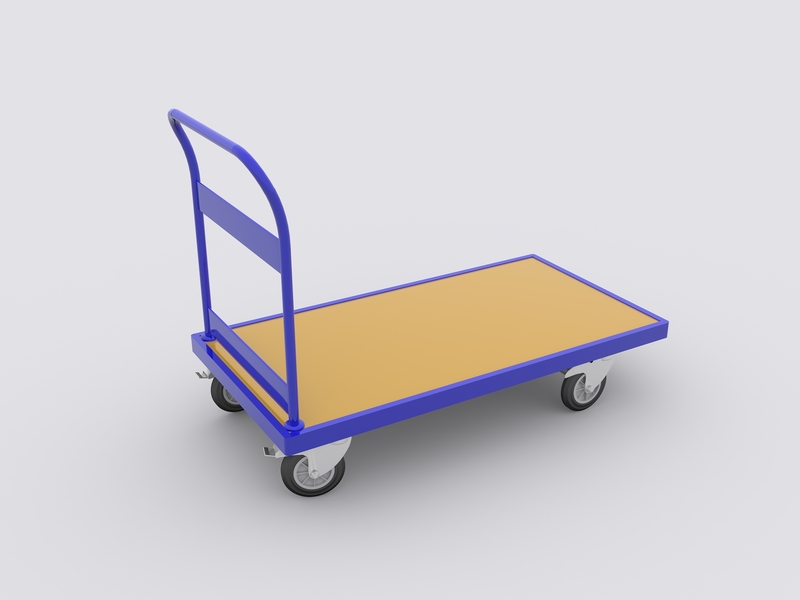Beyond a Simple Scale: The Realities of Moving Your Piano
Posted on 06/06/2025
Beyond a Simple Scale: The Realities of Moving Your Piano
When it comes to moving a piano, many people imagine a daunting process limited to brute force and sheer willpower. However, the realities of piano relocation extend far beyond just muscle. Whether it's an upright or grand piano, transporting this magnificent instrument requires expertise, patience, and meticulous planning. This comprehensive guide explores the intricacies of piano moving, shedding light on the best practices, challenges, and essential tips to guarantee a safe and successful move.

Why Moving a Piano Is Different from Moving Other Furniture
At first glance, you might think moving a piano is akin to handling any other large household item. However, a piano is unlike any regular piece of furniture. Several unique factors set this task apart:
- Sheer Weight and Size - Pianos can weigh anywhere from 300 pounds (upright pianos) to over 1,200 pounds (concert grands).
- Delicate Internal Mechanism - An average piano houses over 10,000 moving parts, including strings, hammers, and keys, all of which can be damaged by improper handling.
- Irreplaceable Sentimental and Monetary Value - Many pianos are heirlooms or significant investments.
- Awkward Shape - Their size and odd center of gravity make them particularly prone to tipping or sliding if not handled properly.
Understanding these differences is crucial. Moving a piano is not just about weight; it is about protecting a complex musical masterpiece from damage, whether cosmetic or internal.
The Types of Pianos and Their Moving Challenges
Before embarking on your piano moving journey, it is important to know what kind of piano you own. Each piano type presents distinct challenges:
Upright Pianos
- More compact and generally lighter
- Easier to maneuver around corners and through standard doorways
- Internal components still at risk during tilting or jostling
Grand Pianos
- Larger and heavier, with intricate legs and pedal systems
- Must often be partially disassembled (legs, pedals, and sometimes the lid)
- Require more movers and specialized equipment
Each type demands careful planning and execution to ensure both the instrument and movers remain safe.
Why Professional Piano Movers Are Worth It
In today's world of DIY moves, the temptation to save on costs by enlisting friends and a rental truck remains strong. The reality, however, is that moving a piano yourself can be a risky proposition. Here's why investing in professional piano movers pays off:
- Specialized Training - Professional piano movers undergo specific training to understand all the nuances of piano transportation.
- Advanced Equipment - Tools like piano dollies, straps, padding, and skid boards are used to protect both your piano and your property.
- Insurance and Liability - Most companies offer insurance, offering you peace of mind if damage occurs.
- Efficient Process - Experienced teams work faster and safer, minimizing disruptions.
- Damage Prevention - Professionals know how to navigate stairs, tight spaces, and rough terrain without harming the piano or themselves.
If you are moving a valuable or sentimental instrument, professional help is not just a luxury; it's a necessity.
Step-by-Step Guide: What Happens During a Professional Piano Move?
What should you expect during a professional piano move? Understanding the process will help you appreciate the amount of skill and attention involved:
1. Pre-Move Assessment
- Movers inspect the piano, assessing its weight, size, and location.
- They evaluate the route, measuring doorways, hallways, and stairs, and plan accordingly.
2. Preparation and Protection
- Piano is wrapped in moving blankets and padding.
- For grand pianos, lids may be locked and legs removed and wrapped.
- All sharp or delicate edges are protected to prevent scratches and dents.
3. Lifting and Loading
- Using specialized straps and dollies, the movers lift the piano onto a skid board or dolly.
- Multiple people coordinate to keep the instrument level and balanced.
- Piano is carefully navigated through doorways and onto the moving vehicle, ensuring secure placement for transport.
4. Unloading and Placement
- At the destination, the process is reversed.
- Professionals set the piano in its new place, reassemble it if needed, and remove all protective materials.
5. Final Inspection and Tuning Recommendation
- Movers advise owners to allow the piano to acclimate before retuning.
- They check for any potential issues caused during transport and address them before departing.
As you can see, moving a piano is a multi-step process, far beyond a simple scale and full of challenges best left to the professionals.
Essential Tips for Preparing to Move Your Piano
Even when you hire professionals, there are a few things you can do to prepare your piano for moving day:
- Clear a Path - Remove all obstacles from the immediate area and along the path from the piano to the exit.
- Communicate with Movers - Inform the moving company about narrow staircases, elevators, or fragile flooring ahead of time.
- Remove Accessories - Take off music stands, lamps, or decorative items attached to the piano.
- Secure the Lid - If you have a grand piano, lock or secure the lid to protect the keys and inner mechanisms.
- Check the Weather - Inclement weather adds risk, so alert your movers and make necessary arrangements for rainy or snowy days.
These proactive measures ensure a smoother, safer move.
Common Pitfalls to Avoid When Moving a Piano
With the importance of piano safety in mind, avoid these common mistakes during piano relocations:
- Underestimating the Weight - An upright piano may look manageable, but its weight is often focused in unpredictable spots.
- Lack of Proper Equipment - Improvised tools increase the risk of dropping or damaging the piano.
- Inadequate Manpower - Insufficient help makes lifting and steering dangerous for both the team and instrument.
- Poor Planning - Not measuring entryways, hallways, or sharp turns can lead to chaos mid-move.
- Ignoring Professional Help - Saving money can cost more if a DIY move results in injury or damage.
Avoiding these errors keeps your piano--and your back--intact.
After the Move: Piano Care and Maintenance
What should you do once your piano safely arrives at its new home? The job isn't over yet. Pianos are sensitive to both movement and environment changes. Here's how to look after your instrument post-move:
- Let Your Piano Rest - Allow the piano to acclimate to its new environment for a few days, ideally 2-4 weeks, before tuning.
- Check the Placement - Position away from direct sunlight, heating/cooling vents, and excessive humidity to minimize damage over time.
- Schedule a Tuning - Moving can knock a piano out of tune; book a professional tuner after settling in.
- Inspect for Damage - Evaluate both the inner mechanisms and external wood for dents, scratches, or loose parts.
- Continue Regular Maintenance - Moving is a good time to schedule deep cleanings or internal servicing.
Proper post-move care ensures your instrument continues to produce beautiful music for years to come.
Cost Factors in Piano Moving
What determines the price of moving a piano? Several factors influence the final cost:
- Size and Type - Larger, heavier, or specialty pianos cost more to move.
- Distance - Local moves are less costly than long-distance or interstate relocations.
- Obstacles - Stairs, narrow doorways, and difficult access routes increase the price.
- Special Requirements - Climate-controlled transportation or crane services for upper-floor moves.
- Insurance - Higher-value pianos may require extra insurance coverage.
On average, a local upright piano move may range from $150 to $500, while grand piano moves or interstate trips can exceed $1,000. Always request multiple quotes and check reviews before hiring movers.
Eco-Friendly and Long-Term Storage for Pianos
If you need to store your piano during the move, choose facilities that offer climate control and proper ventilation. Pianos are especially sensitive to humidity and temperature changes, which can cause wood to swell, warp, or crack.
- Look for storage with stable, moderate temperature and humidity.
- Ensure the facility has strong security and pest control measures.
- Consider eco-friendly moving companies that use sustainable packing materials and efficient, low-emission vehicles.
Long-term storage should not mean neglect. Arrange regular professional inspections while your instrument is in storage.

Myths About Piano Moving Debunked
Several popular myths about piano moving can lead owners astray:
- Myth: Any Moving Company Can Move a Piano
Truth: General movers lack the expertise and tools specific to intricate piano moves. - Myth: Upright Pianos Are Easy to Move
Truth: They are heavy and unwieldy, and their mechanisms can be easily jarred if care isn't taken. - Myth: Moving a Piano Will Always Damage It
Truth: With professional handling, pianos can be moved without harm. - Myth: Tuning Before the Move Is Necessary
Truth: Always wait until after the piano has adjusted to its new environment for the best results.
Conclusion: Trust the Experts for a Harmonious Move
Moving a piano is a delicate and complex process that deserves respect. Beyond its weight, a piano contains an artistic soul--crafted for generations of music and memories. From understanding the various types and challenges to following the safest practices for transport and post-move care, successful piano moving is never just a matter of strength. It is a symphony of planning, precision, and expertise.
Whether you're relocating to a new home, concert venue, or simply moving rooms, don't risk the safety of your cherished instrument. Let the professionals handle your piano move and rest easy, knowing your investment is protected at every step--so you can enjoy its tune for many years to come.






